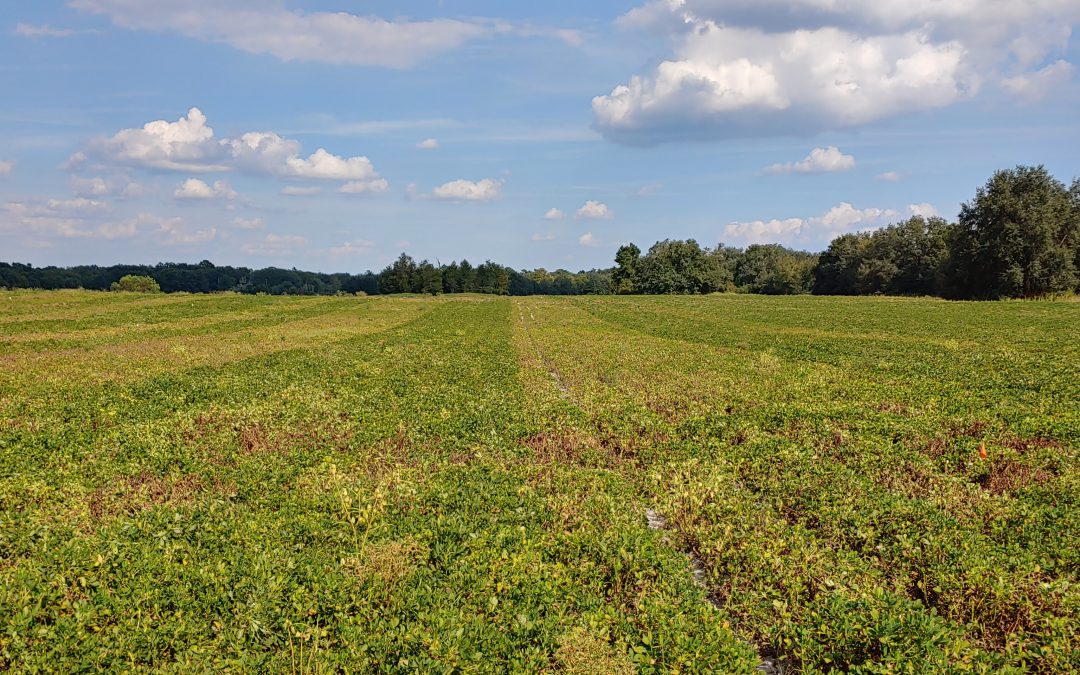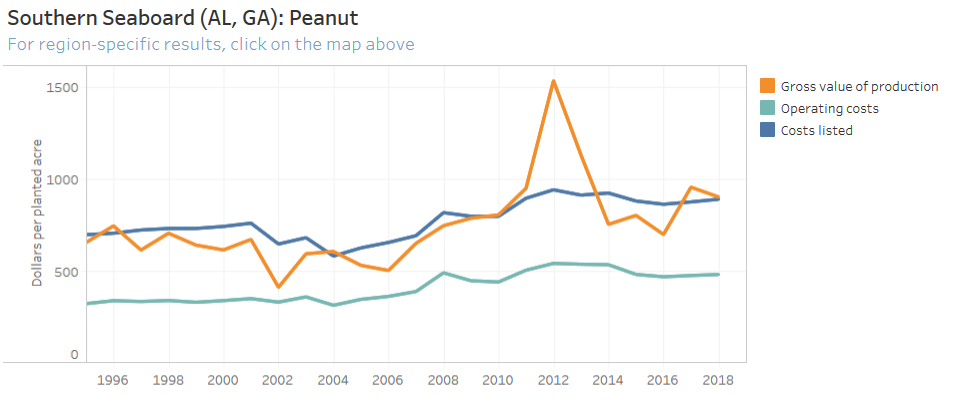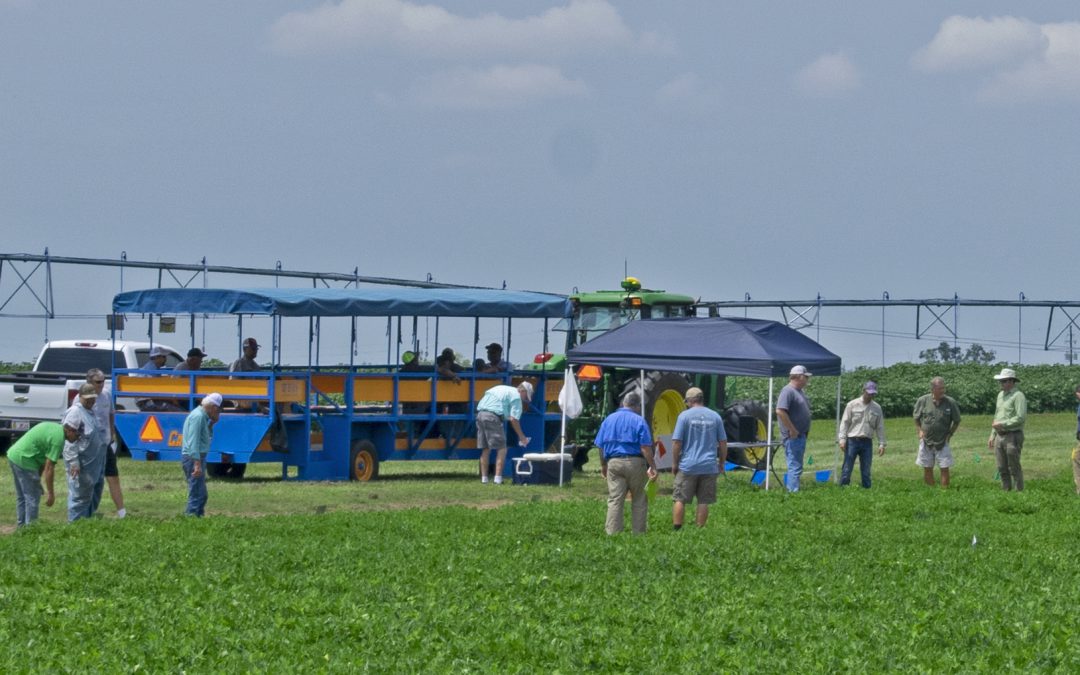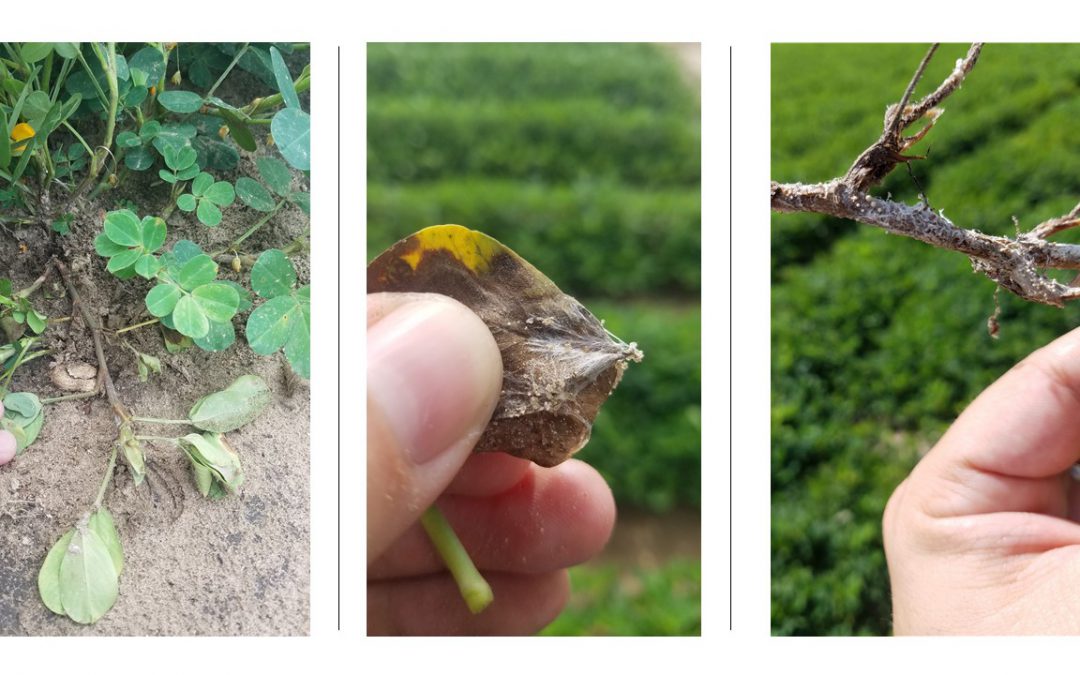
by Michael Mulvaney | Dec 13, 2019
Irrigation is expensive. And there are a lot of non-irrigated or “dryland” acres across the Panhandle. 2019 was characterized by persistent drought stress for much of the season (see below). So in a dry year like 2019, what are you supposed to do to manage...

by Zane Grabau | Oct 11, 2019
Zane Grabau, UF/IFAS Crop Nematologist, Ethan Carter, Regional Crop Agent, Jay Capasso, Columbia County Extension, and Mark Mauldin, Washington County Extension Peanut root-knot nematodes are one of the most prevalent and damaging pests in peanut production in the...

by Doug Mayo | Oct 11, 2019
Source: USDA Economic Research Service Cost and return estimates are reported for the United States and major production regions for corn, soybeans, wheat, cotton, grain sorghum, rice, peanuts, oats, barley, milk, hogs, and cow-calf. The series of commodity cost and...

by btillman | Aug 23, 2019
Ten years ago, I stood in a peanut field planted in late April surveying significant damage from spotted wilt. One year later in 2010, and for the next 8 years, spotted wilt would not make a significant presence across the Southeastern Peanut Belt. In fact, some...

by Doug Mayo | Aug 23, 2019
This week’s featured video was produced by the Panhandle Ag Extension Team. This video provides a brief overview of the topics discussed at the 2019 UF/IFAS Peanut Field Day, that was held Thursday, August 15, 2019, at the North Florida Research and Education...

by Nicholas Dufault | Jun 28, 2019
The peanut field conditions have gone from hot and dry in early June to a mix of wet and dry at the end of the month across much of Florida’s peanut production area (Figure 1). The crop was definitely stressed by the drought and heat with Aspergillus crown rot...







